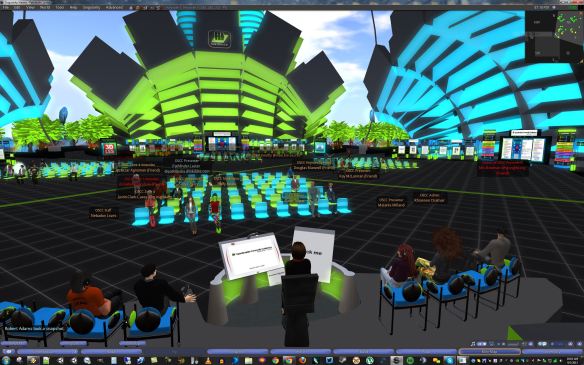If you’re looking for a powerful system that allows you to easily change in-world surface images/textures, make live modifications and add customized web-links within your Unity-based Jibe multiuser virtual world, then you might be interested in a new product from ReactionGrid.
It’s called ACES, and it’s now on sale in ReactionGrid’s Online Store.
Watch the above video for a complete walkthrough. Here are some screenshots from it.

This beautiful 3d store model is made up of many high quality 2d surface images/textures, and I could modify any of them with ACES.
What is ACES?
- ACES is a system that adds user-modifiable display boards to a Jibe world. Any image on the web can be projected onto any display board, and boards can be configured to open any URL in a new browser window.
- The content in an ACES display board can be changed in-situ (within the live published Jibe world) with no work required in the Unity editor.
- All ACES display boards can be changed inworld by any user who has logged in with an account that has administrative level access.
- ACES display boards can also be configured so that any user can “claim” an unused board as their own and then have full admin control over it.
- ACES display boards don’t have to look like boards! Imagine changing the image textures of storefronts, buildings, any surface at all in your Jibe world.
Live Demo:
http://demos.jibemix.com
Demo Accounts:
ACES Admin / password
Demo User / demodemo
If you have any questions, please feel free to email me at pathfinder@reactiongrid.com.
Take care,
– John “Pathfinder” Lester



















